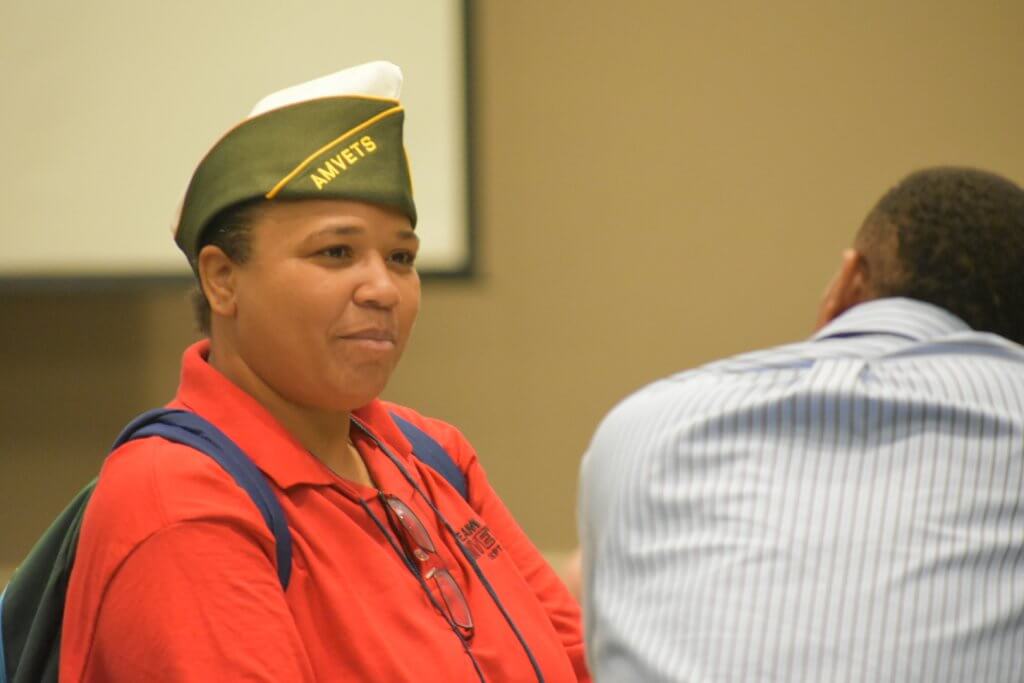When Cpl. Steven Wolf left the Marines in 1997, he had no idea what Veterans Affairs (VA) was – or that he was eligible to receive monetary compensation for his military-related injuries. Now, as the assistant national service director for Disabled American Veterans (DAV), Wolf makes his living making sure that other veterans do not walk that same road alone.
“Filing a VA claim after you get out of the military and have injuries can be very overwhelming and confusing,” Wolf said. “There is a lot of paperwork and questions you might have, so it can be daunting.”
Service officers assist with claims
For generations, VA has had a disability-compensation program that sends monthly tax-free checks to veterans who became ill or injured during their time in service, or whose existing condition worsened. The amount varies based on disability level, a rating determined by VA standards.
In order to access this stipend, one must file a VA claim. And once that claim reaches VA, the process, as of January 2022, takes almost 161 days of waiting.
A veteran cannot receive VA compensation without filing a successful claim first.
DAV helps more than 160,000 veterans file them each year through its network of national service officers. Claims can range from PTSD and tinnitus (the most common claim, according to VA reports) to migraines and nerve damage.
There is neither a limit to the number of times someone can file claims nor an expiration date on eligibility.
“If you don’t have someone who can help you with filing your first VA claim, it can be like filing your taxes with no help, because you just don’t know how,” Wolf said. “It’s a mountain of confusing paperwork, but DAV officers assist you at the beginning, during and post, so it’s kind of for life.”
Other VSOs, such as Veterans of Foreign Wars and the American Legion, also have service officers at locations throughout the country to help veterans file claims.
The document dash
The process, on its face, is fairly straightforward. If a veteran thinks he or she has a service-connected disability, they begin gathering documents to prove their claim: health care records, photographs, witness statements to corroborate the claim(s), their DD-214 form, etc.
They next fill out certain VA forms and wait for approval or disapproval. Appeals are allowed, and officers from several VSOs are usually trained – and even accredited – to help in the process. AMVETS, a VSO that began in 1944 to help World War II vets navigate government benefits, is among them.
Miles Migliara, AMVETS chief communications officer, said his organization aims to make sure no eligible veteran goes without a deserved VA benefit.
“AMVETS service officers are trained to ask a veteran the right questions concerning a claim, lay out exactly what a veteran is eligible for and guide them through what is sometimes perceived as a long, frustrating process,” he said. “We want veterans to enjoy using VA, getting help from AMVETS, and most of all, get the process of filing claims out of the way so they can focus on living their best lives.”
More than 5 million veterans and survivors currently receive VA benefits. In 2018 alone, VA paid more than $91 billion.
Though the COVID-19 pandemic has slowed the process slightly, Migliara said AMVETS pivoted quickly.
“We have embraced telecommunication as a way to keep services flowing,” he said. “We’ve also taken extra measures to keep our website updated with the most current information and resources veterans and service officers can use.”
Wolf is currently helping around 100 veterans personally with their VA claims. The most important thing he emphasized? Don’t do it alone.
“When you get out, you get your Transition Assistance Program, but they may not go into every single thing like VA claims,” he said. “So it’s good to have someone to talk to who has been there.”
For more information, or to locate an accredited service officer, visit the VA website.

